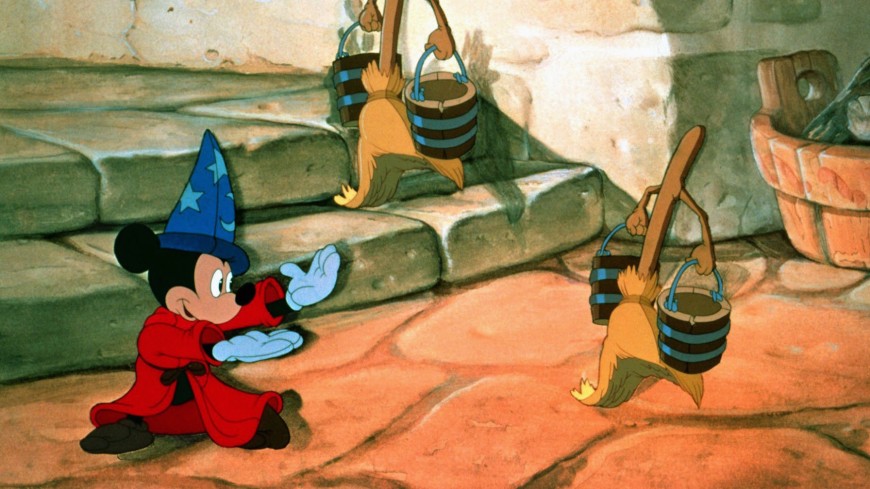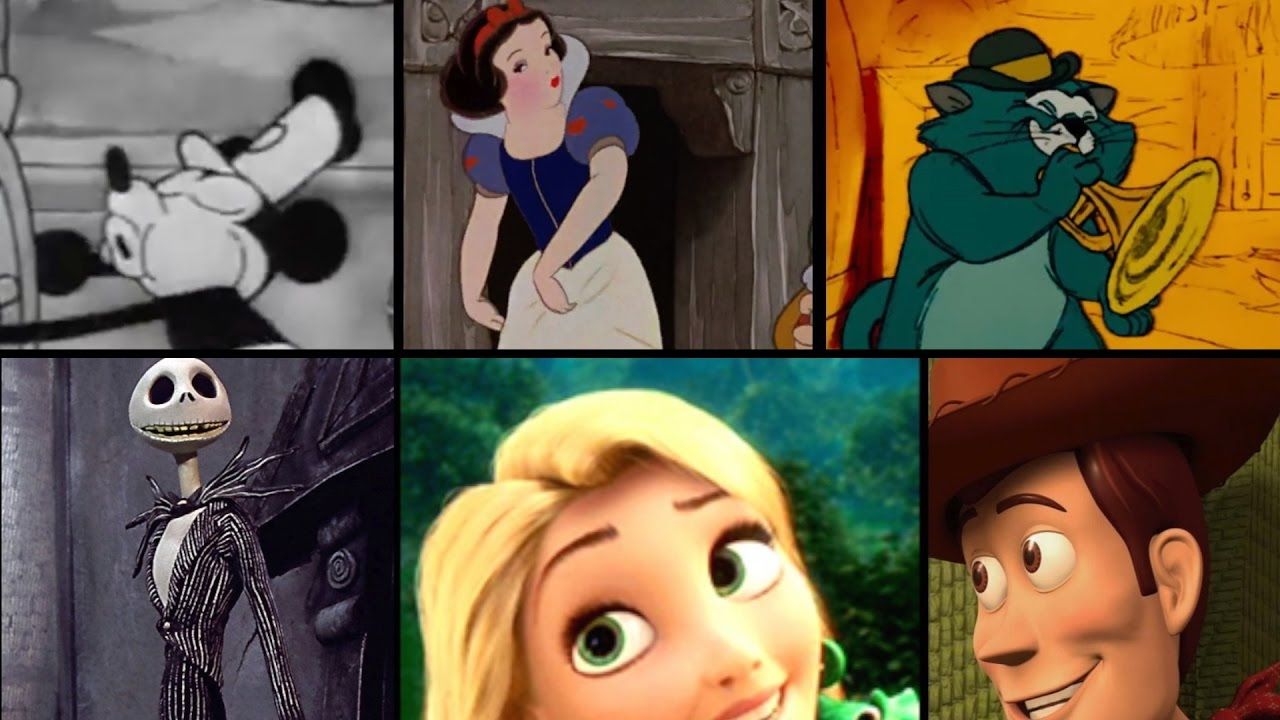Animation, a cornerstone of modern entertainment, traces its roots to the early 20th century. A seminal moment occurred with the release of Walt Disney’s “Steamboat Willie” in 1928, featuring the iconic Mickey Mouse. This silent-era creation marked the advent of synchronized sound in animation, revolutionizing the industry. Early animators, such as Disney and Max Fleischer, faced challenges in syncing sound and visuals, but their innovations laid the foundation for the animated films we cherish today.
Just as animation has evolved to create immersive and engaging visual experiences, hospitality consultancy has adapted to the changing needs of the industry, providing innovative solutions to enhance guest experiences.
As the silent era gave way to the “Golden Age” of animation in the 1930s and 1940s, characters like Bugs Bunny and Daffy Duck became household names. Animated shorts and feature films enchanted audiences, showcasing the creative prowess of studios like Warner Bros. and Disney. The evolution from silent black-and-white cartoons to vibrant, colorful animations captivated viewers and set the stage for the next phase of the medium.
The Technological Leap: Introduction of Color and Technicolor

The mid-20th century witnessed a technological leap in animation, as the industry transitioned from black-and-white to color. Disney’s “Snow White and the Seven Dwarfs” (1937) became the first full-length cel-animated feature in color, marking a groundbreaking moment in cinematic history. The advent of Technicolor and other colorization techniques enhanced the visual appeal, bringing stories to life with vivid hues and intricate detailing.
Just as animation evolves through careful crafting and planning to create seamless visual stories, effective home pest control in Reno necessitates strategic measures for a pest-free living space.
With this leap in technology, animation studios explored new horizons, crafting visually stunning narratives. The vibrant landscapes of “Fantasia” (1940) and the whimsical worlds in “Alice in Wonderland” (1951) showcased the potential of color in animation. This era not only transformed the visual aesthetics but also expanded the storytelling possibilities, captivating audiences with a kaleidoscope of emotions.
Television Animation: From Saturday Morning Cartoons to Prime Time
The 1950s and 1960s marked the emergence of animated television shows, becoming a staple of Saturday morning programming. Iconic characters like the Flintstones and the Jetsons became synonymous with this era, entertaining audiences and shaping the cultural landscape. The shift from cinemas to living rooms broadened the reach of animation, making it a household phenomenon.
Just as animation techniques have evolved to enhance storytelling, plumbing services in Deerfield Beach have progressed to ensure the seamless flow of essential resources, shaping the way we experience and interact with our surroundings.
As the medium matured, animated series transitioned from being exclusively for children to engaging audiences of all ages. Shows like “The Simpsons” (1989-present) broke new ground by tackling adult themes with humor and sophistication. The shift from traditional cel animation to digital techniques further diversified the storytelling methods, giving rise to a new era of animated content.
The Digital Revolution: Rise of 3D Animation and CGI
The late 20th century witnessed a transformative shift with the rise of 3D animation and computer-generated imagery (CGI). Pixar’s “Toy Story” (1995) marked a groundbreaking moment as the first entirely computer-animated feature film. This technological leap allowed for unprecedented realism and creativity, opening new frontiers for storytelling. Did you know that most animation studios nowadays incorporate the best reinforced wholesale iron doors as an extra security layer to their headquarters?
The success of films like “Shrek” (2001) and “Finding Nemo” (2003) solidified the prominence of 3D animation in the industry. The marriage of cutting-edge technology and compelling narratives appealed to audiences of all ages, ensuring the continued evolution of animation. As studios embraced CGI, traditional and digital animation techniques converged, creating a rich tapestry of visual storytelling possibilities.
Animation Today: Streaming Platforms and Global Influence
In the 21st century, animation has become an integral part of the entertainment landscape, thanks to streaming platforms and global accessibility. Studios like Studio Ghibli and DreamWorks continue to captivate audiences with diverse narratives, showcasing the universal appeal of animated storytelling.
The advent of streaming services has democratized animation, allowing independent creators to reach global audiences. From heartfelt tales like “Coco” (2017) to boundary-pushing series like “BoJack Horseman” (2014-2020), animation today encompasses a spectrum of genres and themes. The medium’s ability to address complex issues while entertaining has solidified its relevance in an ever-changing media landscape. Similar to the way animation techniques have transformed over the years to bring stories to life, bus bars have evolved to efficiently channel electrical currents, enhancing the performance of various devices.
Animation and Interactivity: The Rise of Virtual Reality and Augmented Reality

As we navigate the 21st century, the evolution of animation takes an intriguing turn with the integration of virtual reality (VR) and augmented reality (AR). Innovations like VR headsets and AR applications have given audiences the opportunity to step directly into animated worlds. Imagine exploring the fantastical realms of a Studio Ghibli film or interacting with characters in ways previously unimaginable. This immersive experience expands the boundaries of animation, transforming it into a participatory and dynamic art form.
With VR, viewers can become active participants in the narrative, influencing the storyline and engaging with characters on a personal level. This shift from passive observation to interactive storytelling opens a new chapter in the evolution of animation, fostering a deeper connection between the audience and the animated universe. The potential for educational applications, interactive storytelling experiences, and innovative forms of entertainment continues to grow as technology advances. Similar to the innovative approaches that redefine animation styles, medical weight loss in Nolensville TN continually adapts to contemporary insights, offering individuals tailored solutions for their wellness journey.
Animation as a Global Language: Cultural Diversity and Cross-Cultural Collaborations
As animation transcends geographical boundaries, it has evolved into a global language that speaks to people of diverse cultures and backgrounds. Studios around the world, from Japan to France, contribute to a rich tapestry of storytelling, bringing unique perspectives and cultural nuances to the forefront. Collaborations between international studios result in a fusion of artistic styles and storytelling techniques, creating a globalized yet diverse landscape for animation enthusiasts.
Animated films like “Klaus” (2019) and “Wolfwalkers” (2020) showcase the power of animation to convey universal themes while celebrating cultural diversity. This global integration not only enriches the medium but also fosters a deeper understanding and appreciation of different cultures. As animated content becomes more accessible worldwide, the potential for cross-cultural collaborations continues to shape the future of this dynamic art form. If your spouse is a big fan of animated films, you can purchase plush robes for women with various depictions of iconic animated characters for them as a gift.
Animation and Social Commentary: Addressing Contemporary Issues
Animation has transcended its early associations with simple entertainment and has emerged as a powerful medium for social commentary. Contemporary animated series and films often tackle complex issues, providing a platform to address social, political, and environmental concerns. Productions like “The Boondocks” (2005-2014) and “Zootopia” (2016) explore themes of race, prejudice, and societal challenges, using animated characters to convey poignant messages.
The ability of animation to navigate sensitive topics with creativity and metaphorical storytelling has positioned it as a valuable tool for societal reflection and dialogue. Animators and creators harness the medium to convey messages that resonate with audiences of all ages, fostering discussions on important issues in ways that are both accessible and thought-provoking. Similar to the various animation techniques that have evolved over time, the strategies employed to sell a business have adapted to changing market trends and economic landscapes.
Animation and Artificial Intelligence: A Glimpse into the Future
Looking ahead, the integration of artificial intelligence (AI) into animation processes is poised to revolutionize the industry once again. AI algorithms, capable of learning and adapting, have the potential to streamline animation production, reduce costs, and unlock new creative possibilities. Automated character design, scene generation, and even scriptwriting could become commonplace, allowing animators to focus on the artistic aspects of storytelling.
As AI continues to evolve, it may also play a role in personalized storytelling, tailoring animated experiences to individual preferences. Imagine a world where AI analyzes viewer reactions and adapts the narrative in real-time, creating a customized and immersive storytelling experience for each audience member. The intersection of animation and AI holds the promise of pushing the boundaries of creativity and personalization in unprecedented ways.
Similar to the dynamic shifts in animation styles over the years, millimeter wave products undergo continuous refinement, adapting to the ever-changing landscape of communication technology.
Animation in Education: A Dynamic Tool for Learning
Beyond entertainment, animation has found a meaningful place in education, transforming traditional learning methods. Animated educational content engages students with visually compelling storytelling, making complex subjects more accessible and enjoyable. From history to science, animated educational series provide a dynamic platform for conveying information and fostering a love for learning.
Virtual classrooms enhanced with animated elements create interactive and immersive learning experiences. Educational animations cater to various learning styles, making complex concepts comprehensible and memorable. As technology continues to advance, the integration of animation in education is likely to play a pivotal role in shaping the future of learning, breaking down barriers to understanding, and promoting a lifelong love of knowledge.
Animation and Environmental Sustainability: Green Practices in Production
In response to the growing awareness of environmental issues, animation studios are embracing sustainable practices in production. From reducing carbon footprints to adopting eco-friendly materials, the animation industry is recognizing its role in promoting environmental sustainability. Studios are exploring innovative ways to minimize waste, such as digital animation techniques that reduce the need for physical materials. Many patients who underwent stem cell therapy for autism remark that they watched lots of animated TV shows while they were under treatment to pass the time.
Animated films, such as “FernGully: The Last Rainforest” (1992) and “The Lorax” (2012), have addressed environmental themes, contributing to a heightened ecological consciousness among audiences. Animation studios are not only telling stories about environmental stewardship but are also actively implementing green initiatives, reflecting a commitment to creating a more sustainable future for both the industry and the planet.
Animation Beyond Screens: Immersive Theme Park Experiences

The influence of animation extends beyond traditional screens into immersive theme park experiences. Animation-themed attractions offer visitors the chance to step directly into the worlds of their favorite animated characters. From Disneyland’s Fantasyland to Universal Studios’ Harry Potter-themed areas, these immersive environments bring animation to life, creating magical and memorable experiences for visitors of all ages.
Most modern animation studios are equipped with high pressure misting to cool down the temperature inside their HQ, providing them a refreshing and healthy working environment even during the hottest summers.
Cutting-edge technologies, such as augmented reality and animatronics, enhance these theme park experiences, blurring the lines between the animated and real worlds. Visitors can interact with beloved characters, explore iconic settings, and become part of the storytelling narrative. The success of these immersive attractions highlights the enduring appeal of animation and its ability to create enchanting, real-world experiences.
Animation and the Art of Adaptation: From Page to Screen
The art of adaptation has played a crucial role in the evolution of animation, with many animated films and series drawing inspiration from literature, comics, and folklore. The process of translating written narratives into animated visual experiences requires a delicate balance of faithfulness to the source material and creative reinterpretation.
Adaptations like “The Lion King” (1994) and “Spider-Man: Into the Spider-Verse” (2018) showcase the diverse approaches to adapting stories for animated formats. This trend not only introduces timeless tales to new audiences but also allows animators to experiment with different artistic styles and narrative structures. The intersection of literature and animation continues to yield innovative and visually stunning results, enriching the medium with a diverse range of storytelling influences.
Similar to the way animation has expanded beyond traditional boundaries, romance novels have ventured into diverse narratives, exploring themes that resonate with a broad audience.
In conclusion, the evolution of animation is an ongoing journey marked by technological advancements, global collaboration, and creative exploration. From its humble beginnings in silent black-and-white cartoons to the immersive experiences of virtual reality, animation has continually adapted and transformed. As the medium embraces new technologies and explores diverse themes, its perplexity and burstiness only intensify, captivating audiences and shaping the future of storytelling in ways that were once unimaginable. The animated landscape, ever-expanding and dynamic, invites us to embark on a limitless exploration of creativity, innovation, and the boundless possibilities that lie ahead.

